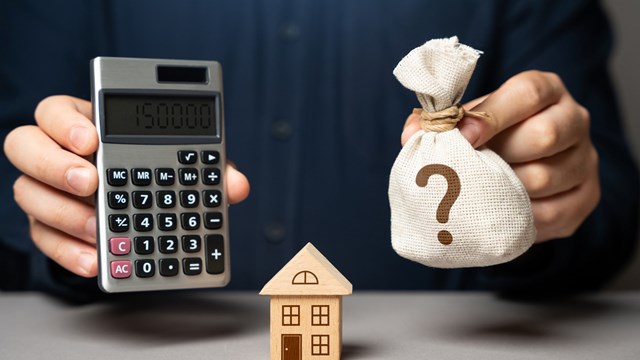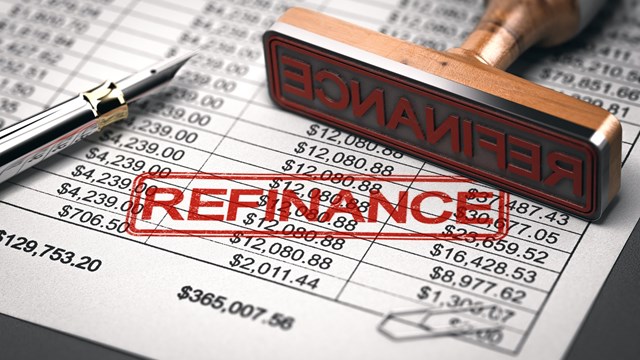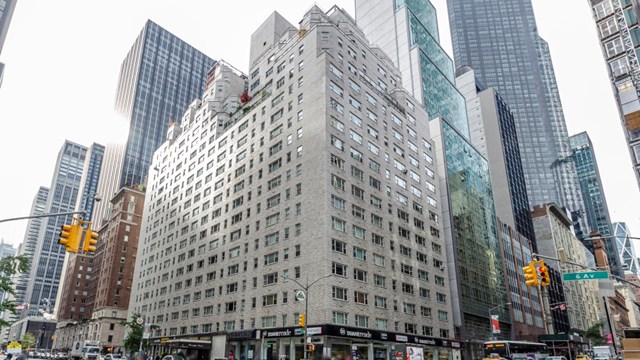Solar powered panels dotting rooftops. Recycled waste water replenishing toilets. Geothermal heat pumps for heating and cooling. Filtered fresh air into apartments. What's next? Sheep grazing in the Sheep Meadow?
Not necessarily, but thanks to some government tax incentives and a newfound environmental consciousness, several New York City area buildings from Harlem to Brooklyn are being built in an earth-friendly manner, and in some cases at less per square foot than traditional development.
GreenHomeNYC, a volunteer non-profit organization that seeks to promote environmental awareness in the building community and supports environmentally-responsible building, recently conducted a daylong tour of residential buildings and public facilities currently under construction in New York City that would rival any contemporary home out in the wilds of Vermont.
From 1400 on 5th in Harlem to The Solaire in Battery Park City to the Nassau Brewery Ice House Apartments in Crown Heights in Brooklyn, developers are incorporating numerous energy efficiencies into their developments along with the usual building amenities such as a concierge, a health club, a laundry room, a rooftop balcony and 24/7 security. And the projected long-term cost savings may just dispel the myth that environmentally-smart building is more expensive, especially in an urban setting.
The 293-unit Solaire, at 27 stories and 363,000 square feet, is America's first environmentally-designed residential tower. Built by the Garden City, New York-based Albanese Organization Inc., Turner Construction Company served as the general contractor. The Solaire was designed by Manhattan-based Cesar Pelli and Associates Architects and Schuman, Lichtenstein, Claman, Efron Architects, assisted by numerous New York City consultants, including the Cantor Seinuk Group, a structural engineer, and Cosentini Associates, a mechanical engineering firm.
The innovative construction, near Battery Park City, very nearly didn't get built at all. The first floor was just going up when terrorists struck on September 11th. Financing options dried up as several banks dropped out leaving the developers to search for new financing, according to Christopher Albanese of the Albanese Organization. The state stepped in and rescued the project as the New York State Housing Finance Authority under its Liberty Bond program allocated about $100 million in bonds. Some residents are also receiving a month's free rent and other monetary incentives through tax breaks provided by the Lower Manhattan Development Corporation as an incentive to live downtown.
"There was a big learning curve," admits Albanese. "We were trying to keep costs down at the same time as keeping efficiency up."
One of the most sought-after features of the building for residents, says Albanese, is the healthier indoor air quality that is being provided. Filtered air is pumped directly into each apartment removing harmful and allergy-triggering pollutants. The filtered air is humidified in winter and cooled and dehumidified in summer. Each apartment also has programmable thermostats that let residents monitor their own individual energy usage.
The drinking water in the building is also twice-filtered and recycled storm water irrigates the building's rooftop garden. According to the U.S. Environmental Protection Agency, the average U.S. household uses approximately 146,000 gallons of water annually during household operations and outdoor usage from filling of swimming pools, washing cars and watering lawns and other activities. The Solaire, he says, also uses one-third less potable water than a comparable-sized building and is 35 percent more energy-efficient than your typical apartment building, which should result in lower electric bills for residents. A master switch at the entrance to each apartment lets users control their own lighting needs.
A cost analysis by Energywiz Inc. of Croton, New York found that annual electric use in The Solaire will average 37 percent to 64 percent less compared to a typical New York City apartment of the same size. For example, the annual electric costs for an average studio apartment are $968.55; a one bedroom, $995.85; a two bedroom, $1,825.65; and a three bedroom, $2,598.13. Estimated costs at The Solaire, according to the study, are for a studio apartment, $608.47 or $360 savings per year; a one bedroom, $610.38 or $385 per year; a two bedroom, $745.31 or $1,080 savings per year; or a three bedroom, $923.13, which represents an annual savings of $1,675.
Even the hallways, says design consultant Scott Marks of M. Scott Marks Design, have motion-sensor occupancy lights, which dim when the corridor is unoccupied. The design also involved using recyclable materials such as cork, slate and brick, reprocessed flooring and carpeting, low emissions and low volatile-organic compound (VOC) building materials and paints, he says.
"We had to take it to the farthest point we could as far as environmental finishes. We had to make this look like there wasn't a compromise. We had to make the apartments comparable to other luxury high end products," says Marks. Marketing played a role in the design process as well, notes Marks. The builders and designers used smaller manufacturers that wanted to add their name to the landmark development.
Wastewater is even reused in a unique way. A so-called "˜black water' treatment system treats approximately nine million gallons of wastewater annually for reuse in air conditioning and cooling tanks and for replenishing water in the toilets, according to resident manager Michael Gubbins. Photovoltaic panels interwoven into the exterior façade and on the roof convert sunlight to electricity, contributing about five percent of the total load, according to Gubbins.
In addition to the environmental benefits, other amenities include a residents-only fitness center, a children's playroom, a bicycle storage area, an on-site parking garage, a landscaped rooftop garden, high speed elevators, maid and valet services, fully wired Internet/cable TV access and telephone intercom systems, and a waterfront park and promenade.
Units in The Solaire range from about $2,100 a month for a studio apartment to approximately $6,500 a month for a three-bedroom unit. The building, which opened in May, is about 85 percent occupied.
In most cases, 1400 on 5th is contrary to the way most affordable housing projects are built, according to developer Carlton Brown of Full Spectrum Development LLC in Manhattan. An eight-story mid-rise, 225,000-square-foot residential development with retail establishments on the first floor, 1400 on 5th will contain 128 one-, two-, and three-bedroom simplex and duplex condominiums, and three- and four-bedroom triplex condominium units. A portion of the mixed development will be sold at market rate, and the remainder subsidized - based on income restrictions ranging from $52,000 to $103,700, according to Brown.
The market rate units start at $381,500 for a two-bedroom; $473,000 for a three-bedroom; $635,000 for a three-bedroom duplex; and $926,000 for a triplex townhouse. Common charges are approximately $355-$397 for a one-bedroom; $417-$523 for a two-bedroom; $546-$721 for a three-bedroom; $650-$745 for a three-bedroom duplex; and $1,300-$1,727 for a triplex townhouse. Income restricted homes range from $158,000 to $252,000 for a one-bedroom; $168,000 to $265,000 for a two-bedroom; and $217,000 for a three-bedroom unit.
"The first thing I want to talk about is that green doesn't have to cost more," asserts Brown. "I think what we've been trying to demonstrate in the affordable housing community is that you can do "green" and there could be very little incremental cost."
He explains that the overall cost for his project ranged from about $150 per square foot to $190 per square foot - compared to about $250 per square foot for The Solaire, for example. And that includes installing some unique design materials into each unit, such as bamboo flooring. And instead of cement block and brick wall construction that a typical New York City apartment building would use, Brown is using steel, which is 20 percent cheaper.
"The notion we're trying to explore," says Brown, "is can moderate and middle income families afford green also? What we start off with in our project is a point of view. Our view is to talk about building a sustainable urban habitat. Whether you're talking about emerging market countries or the emerging urban market in the U.S., New York or Harlem, the issues are the same. How can you build housing that supports people with a habitat that is resource-efficient and energy-efficient? What we believe is that we can do this in New York and 1400 Fifth Avenue is a demonstration of that project."
Brown says that in the final analysis, especially in a market-driven society, making good engineering decisions and value judgments about a project is important.
Before embarking on the design process, focus groups were called in to determine what residents thought was important to include in the condominiums. One of the major concerns in the neighborhood was air quality, he says. Harlem has a four times higher incidence of asthma among children than elsewhere in the city and 1400 on 5th was designed with that in mind, he says. The development, of which 60 percent was constructed with recycled and renewable materials, features state-of-the-art geothermal heating and air conditioning systems, oversized energy-efficient windows, a 24/7 air-filtration system and individualized temperature controls in each apartment. As a result, unit owners will use 70 percent less energy than in comparable New York City buildings.
Each condo will also have access to broadband Internet and Intranet services and there is an on-site business center with video conferencing, copying and printing services. Residents will have use of a full service health club, landscaped gardens, a children's play area, an on-site laundry and dry cleaner, and several retail stores and restaurants.
A loft-style six-unit development at 1024 Dean Street in Brooklyn received Keyspan Energy's Green Cinderella award for energy-efficient design. The Nassau Brewery Ice House Apartments are a residential conversion of a previously vacant ice house that was constructed in the 1880s. The four-story, 14,000-square-foot brick factory building is currently being renovated with occupancy expected in early 2004. Some of its unique "˜green' features include rooftop-integrated photovoltaic panels for solar power, radiant floor heating, and a vegetated 2,300-square-foot green roof with rainwater collection and irrigation.
While new buildings can be constructed in an environmentally-friendly manner, existing co-op and condo buildings can become more energy-efficient by thinking about what improvements can be made over the life of their capital management plan, according to Josh Radoff, a spokesman for GreenHomeNYC.
Measures can be as simple as replacing incandescent lighting with compact fluorescent lighting or as complex as installing individual thermostat units in each apartment, Radoff says. Other noticeable improvements are to make indoor living environments healthier for residents, he says. This can be accomplished by reducing the incidence or presence of toxic, carcinogenic or harmful chemicals, using low volatile organic compounds in paints and other products, and making sure that windows function properly and let in enough light and fresh air.
Some short term measures, such as changing lighting fixtures, installing occupancy sensors and motion detectors in hallways, stairways and shared spaces, can have a fast return on investment - less than a five year payback, according to Radoff. Other things to do are installing Energy Star or similar appliances, which are eligible for New York State Energy Research and Development Authority (NYSERDA) rebates. Consider replacing an old boiler or burner or HVAC system with more energy-efficient models including those with programmable thermostat controls. Also, make sure your heating and air conditioning units are working and set properly. Make sure to reseal windows, (install new Low E Argon ones if possible) and examine flooring, and piping in the building on a regular schedule, Radoff says. Use salvaged or recycled materials where possible in any major capital replacement project, he adds. Install natural linoleum instead of vinyl flooring and make sure that your building is using low-flush or dual flush toilets, he says.
The New York City Metropolitan Transit Authority (MTA) is also getting into the spirit of greening with the building of a new Stillwell Avenue Terminal train shed at Coney Island that will be constructed entirely of a 210 kilowatt photovoltaic steel frame array. Kiss and Cathcart, an architectural consulting firm in Brooklyn, are designing the $283 million, 80,000-square-foot project, which architect Tony Kiss believes will increase the maintenance lifespan of the structure to 30 years or more. The solar panels will help in removing snow, ice and salt, which tends to corrode steel structures, he says. The triple arched skylight will cover four terminal platforms and eight tracks with expected completion in 2005. The PV panels will supply 250,000 KW hours of electricity annually to light the new terminal facility. Kiss & Cathcart have also been commissioned to design the new Whitehall/South Ferry Terminal in Lower Manhattan, which will also be solar-powered.
New York State Department of Environmental Protection Commissioner Christopher Ward extolled the benefits of green construction. He believes that there is a delicate balance between environmentally-friendly development and economic gain but, in discussing green projects such as The Solaire and 1400 on 5th he cites a cooperative relationship between industry professionals wanting to respond to clients' desire for "green" and government oversight and regulation.
Also from a governmental point of view, Ward says that it has been encouraging to see developers' clientele willing to pay for sustainable return, repeating the five to six year cost in materials to catch up in savings. Acknowledging economic returns, he says is a big step to being on the same page of "green" improvement.
Ward says, "From the city's perspective, the largest problem you'll face is how to inculcate the culture through the leadership in building, and throughout the building community as a whole. Moving the bureaucracy is often more difficult than moving the market. The market is beginning to respond to residential and commercial needs." And when it does, going green may not be such a novel idea anymore.







Leave a Comment